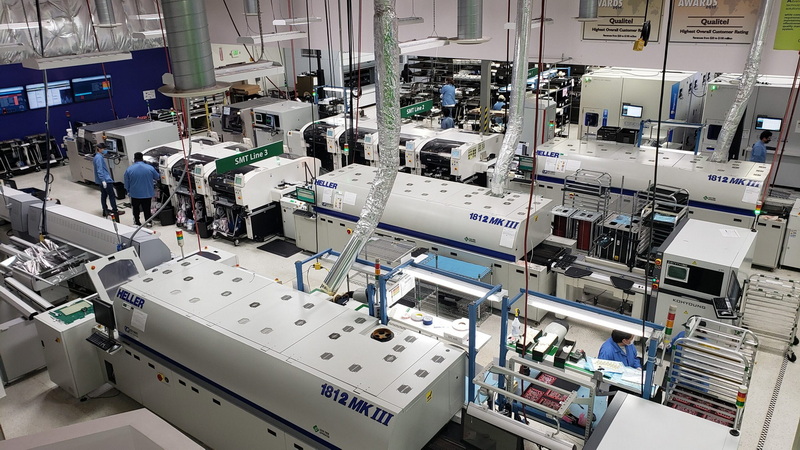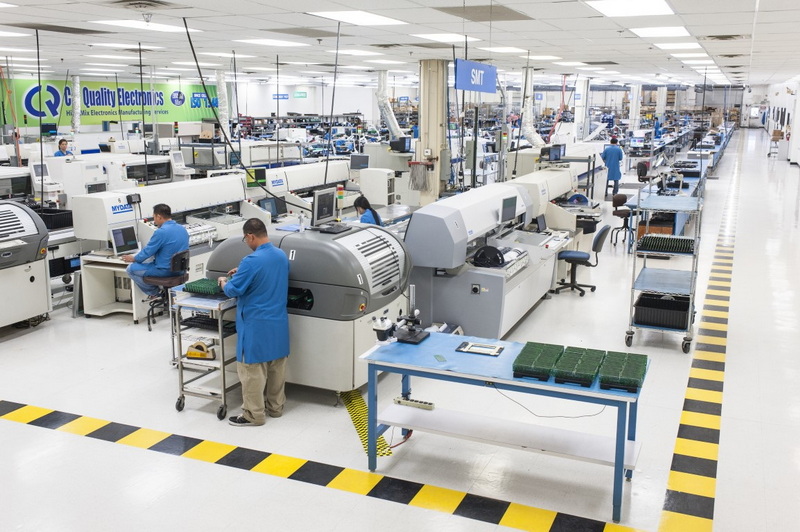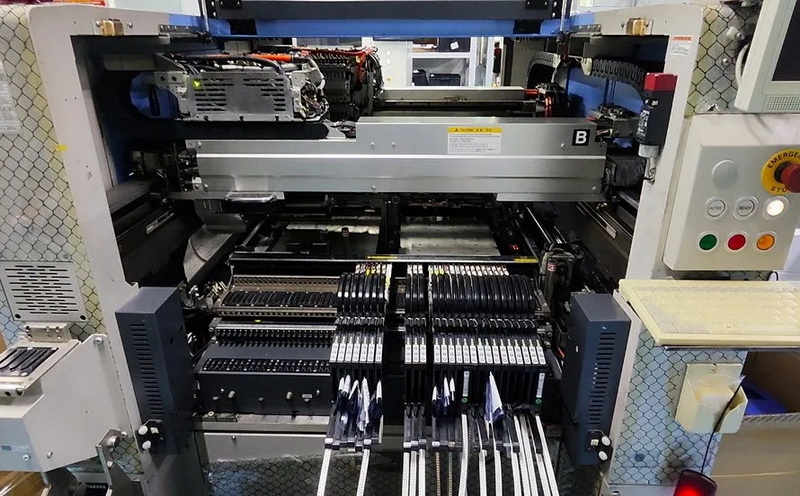Content Menu
● Increased Automation and Robotics
● Emphasis on Sustainability
● Advanced Materials and Substrates
● Integration of Artificial Intelligence (AI)
● Miniaturization and Microelectronics
● Enhanced Connectivity Solutions
● Shorter Production Cycles
● Flexibility in Production Lines
● Advanced Testing Techniques
● Conclusion
● FAQ
>> 1. What is Surface Mount Technology (SMT)?
>> 2. How does automation improve SMT production?
>> 3. What are the environmental benefits of modern SMT practices?
>> 4. How does AI influence PCB manufacturing?
>> 5. Why is miniaturization important in electronics?
● Citations:
Surface Mount Technology (SMT) has become a cornerstone of modern electronics manufacturing, enabling the production of compact, efficient, and high-performance printed circuit boards (PCBs). As technology continues to evolve, so do the trends shaping SMT PCB production lines. This article delves into the latest advancements in SMT, highlighting key innovations and practices that are transforming the landscape of PCB manufacturing.

Increased Automation and Robotics
Automation is at the forefront of SMT production line advancements. The integration of robotics has revolutionized how components are placed on PCBs, enhancing speed and precision. Automated systems, such as pick-and-place machines, can place thousands of components per hour with remarkable accuracy. This shift reduces human error and increases throughput, making it essential for manufacturers aiming to meet high demand.
Moreover, automation extends beyond assembly. Automated Optical Inspection (AOI) systems ensure quality control by inspecting PCBs for defects after assembly. These systems utilize advanced imaging techniques to detect misalignments or soldering issues, significantly improving production reliability.
In addition to AOI, manufacturers are adopting robotic arms for various tasks such as soldering and inspection. These robots can work alongside human operators, enhancing productivity and ensuring consistent quality across production lines. The trend towards full automation is expected to continue, driven by the need for efficiency and accuracy in manufacturing processes.
Emphasis on Sustainability
Environmental concerns are driving the electronics industry towards more sustainable practices. Manufacturers are increasingly adopting eco-friendly materials and processes in SMT production lines. This includes the use of lead-free solder and recyclable substrates to minimize environmental impact.
Sustainability initiatives also encompass energy-efficient machinery and waste reduction strategies. By implementing greener practices, companies not only comply with regulations but also appeal to environmentally conscious consumers.
Furthermore, manufacturers are exploring ways to reduce their carbon footprint by optimizing energy consumption during production. This includes investing in renewable energy sources and improving the overall efficiency of their operations. As sustainability becomes a priority for consumers and regulatory bodies alike, companies that embrace these practices will likely gain a competitive edge.
Advanced Materials and Substrates
The demand for high-performance electronics necessitates the use of advanced materials in PCB manufacturing. Innovations such as flexible PCBs, rigid-flex designs, and metal core substrates are becoming more prevalent. These materials enhance thermal management and signal integrity, which are critical for high-speed applications like 5G technology.
Additionally, manufacturers are exploring low-loss laminates that minimize signal degradation in high-frequency applications. This trend is particularly relevant as industries push for devices that can operate efficiently at higher frequencies.
The development of new materials also includes advancements in dielectric properties and thermal conductivity, allowing for better performance in compact designs. As electronic devices become more sophisticated, the need for innovative materials that can withstand increased thermal loads while maintaining performance will continue to grow.
Integration of Artificial Intelligence (AI)
AI is playing an increasingly significant role in optimizing SMT production lines. Machine learning algorithms analyze vast amounts of data from production processes to identify patterns and predict potential issues before they arise. This predictive maintenance capability not only enhances efficiency but also reduces downtime.
AI-driven systems can also optimize production parameters in real-time, ensuring that each PCB meets strict quality standards while maximizing output. The combination of AI with automation creates a smart manufacturing environment that is responsive to both market demands and operational challenges.
Moreover, AI can assist in design optimization by analyzing previous designs and suggesting improvements based on performance data. This capability allows engineers to create more efficient layouts that minimize signal interference and enhance overall functionality.
Miniaturization and Microelectronics
As consumer electronics continue to shrink in size while increasing in functionality, SMT production lines are adapting to handle micro-sized components with precision. The trend towards miniaturization allows for more complex circuit designs packed into smaller spaces.
This shift is evident in the growing use of microelectronic components, such as 0201 passive components and microBGAs (Ball Grid Arrays). Manufacturers are investing in specialized equipment capable of placing these tiny components accurately, ensuring that performance is not compromised despite size reductions.
Furthermore, advancements in microvia technology enable manufacturers to create multi-layer PCBs with intricate routing capabilities. This allows for higher component density without sacrificing performance or reliability.
Enhanced Connectivity Solutions
With the rise of the Internet of Things (IoT), there is a growing need for PCBs that support advanced connectivity solutions. Smart PCBs equipped with embedded sensors and wireless communication capabilities are gaining traction across various industries.
These innovations allow devices to monitor environmental conditions and communicate data seamlessly, paving the way for smarter homes, healthcare applications, and industrial automation. As connectivity becomes integral to product design, SMT lines must evolve to accommodate these advanced functionalities.
The integration of 5G technology further emphasizes this trend as manufacturers seek to develop PCBs capable of handling higher frequencies and increased data rates. This necessitates precise manufacturing techniques and low-loss materials to ensure signal integrity.

Shorter Production Cycles
The demand for faster turnaround times is reshaping SMT production lines. Manufacturers are under pressure to deliver products quickly while maintaining high quality standards. This has led to the adoption of lean manufacturing principles that streamline processes and reduce waste.
By optimizing workflows and utilizing just-in-time inventory strategies, companies can respond more rapidly to market changes without sacrificing quality or efficiency.
Additionally, advancements in software tools enable manufacturers to simulate production processes before implementation. This allows for better planning and resource allocation, ultimately reducing lead times from development to market launch.
Flexibility in Production Lines
The need for customization has prompted manufacturers to invest in flexible SMT equipment capable of handling diverse product requirements. High-mix low-volume production strategies allow manufacturers to adapt quickly to changing consumer preferences without significant downtime or reconfiguration costs.
Flexible equipment enables quick changeovers between different product types, facilitating efficient production runs tailored to specific customer needs. This adaptability is crucial as markets demand increasingly personalized products while still expecting rapid delivery times.
Advanced Testing Techniques
Ensuring the quality and reliability of PCBs is paramount; thus, advancements in testing technologies are critical. Techniques such as automated optical inspection (AOI), X-ray inspection, and advanced electronic testing have become more sophisticated.
These methods allow for early detection of defects during various stages of production—improving overall quality control measures—and ensuring that each PCB meets stringent performance criteria before reaching consumers.
Moreover, real-time monitoring systems integrated into SMT lines provide continuous feedback on production quality metrics, enabling immediate corrective actions when necessary.
Conclusion
The landscape of SMT PCB production lines is evolving rapidly due to advancements in automation, sustainability practices, AI integration, material innovations, miniaturization trends, enhanced connectivity solutions, shorter production cycles, flexibility in manufacturing capabilities, and advanced testing techniques. As these trends continue to shape the industry, manufacturers must remain agile and responsive to meet the demands of an increasingly sophisticated market.
By embracing these innovations—ranging from eco-friendly practices to cutting-edge technologies—electronics manufacturers can enhance their competitiveness while delivering high-quality products that meet consumer expectations now and into the future.

FAQ
1. What is Surface Mount Technology (SMT)?
Surface Mount Technology (SMT) is a method used in PCB assembly where electronic components are mounted directly onto the surface of a PCB rather than through holes. This technique allows for smaller components and higher density layouts.
2. How does automation improve SMT production?
Automation enhances SMT production by increasing speed and accuracy while reducing human error. Automated machines can place thousands of components per hour and perform inspections automatically.
3. What are the environmental benefits of modern SMT practices?
Modern SMT practices focus on sustainability by using lead-free solder materials and recyclable substrates while implementing energy-efficient processes that reduce waste generation.
4. How does AI influence PCB manufacturing?
AI influences PCB manufacturing by providing predictive maintenance capabilities and optimizing production parameters through data analysis, leading to increased efficiency and reduced downtime.
5. Why is miniaturization important in electronics?
Miniaturization allows for more complex circuit designs within smaller devices, meeting consumer demand for compact electronics without sacrificing functionality or performance.
Citations:
[1] https://nyweekly.com/tech/exploring-pcba-and-smt-in-modern-electronics-manufacturing/
[2] https://www.911eda.com/news/pcb-design-trends-in-2024/
[3] https://arkcircuits.com/blog/impact-of-smt-on-modern-pcb-design/
[4] https://www.mycronic.com/product-areas/pcb-assembly/news-and-press-releases/news/ten-key-smt-trends-you-need-to-know/
[5] https://www.pcbgogo.com/Article/Innovations_in_printed_circuit_board_assembly__trends_and_techniques.html
[6] https://www.unmannedsystemstechnology.com/feature/mpl-explains-the-evolution-of-smt-technology/
[7] https://www.smtfactory.com/Future-Trends-in-SMT-Lines-Innovations-Shaping-The-Electronics-Manufacturing-Industry-id44863586.html
[8] https://smtnet.com/news/
[9] https://emsginc.com/resources/the-evolution-of-surface-mount-technology/
[10] https://www.technotronix.us/pcbblog/top-trends-in-printed-circuit-board-manufacturing-for-2024/
[11] https://pcbpit.com/trends-and-challenges-in-pcb-manufacturing-for-2024/
[12] https://www.andwinpcb.com/innovations-in-surface-mount-technology-for-enhanced-electronics/
[13] https://www.pentalogix.com/blog/2023/11/17/the-future-of-pcb-fabrication-emerging-technologies-and-trends/
[14] https://smttoday.com/2024/07/29/smt-component-market-trends-and-win-sources-strategic-responses/
[15] https://m.smt11.com/blog/SMT-Field/SMT-Process-Status-and-Future-Development-Trends-2023.html
[16] https://www.circuits-central.com/blog/pcb-assembly-in-2024-and-beyond-what-does-the-future-hold/
[17] https://www.acceleratedassemblies.com/blog/the-future-of-throughhole-technology-in-2024-a-resilient-legacy-in-modern-electronics
[18] https://www.linkedin.com/pulse/latest-trends-technological-innovations-pcb-industry-2024-susana-xu-r7kfc
[19] https://www.linkedin.com/pulse/latest-trends-technological-innovations-pcb-industry-2024-yolin-gan-hddac
[20] https://www.circuits-central.com/blog/the-future-of-pcb-manufacturing-emerging-technologies-and-trends-part-2/




















